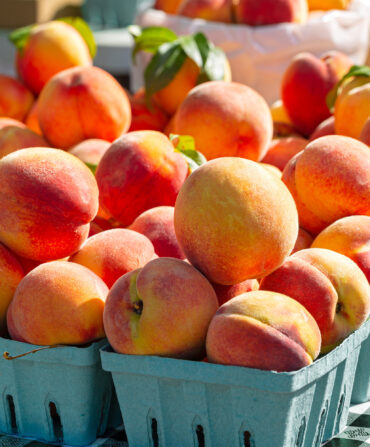Spying spring wildflowers is one of a nature lover’s greatest joys. “After a long gray winter, it’s just so refreshing to see this new life,” says Chris Pistole, park interpreter at Hobbs State Park-Conservation Area in Rogers, Arkansas. He compares it to “welcoming back friends you haven’t seen since last year.” And the blooms bring other pals, too. The early ephemerals that pop up before trees leaf out “provide food for pollinators and other species in the ecosystem,” he says. So if you check out these floral strolls around the South, keep an eye out for bees and butterflies, too.

Hobbs State Park-Conservation Area
Rogers, Arkansas

Pistole recommends two half-mile trails in this heavily forested Ozarks park to take in the spring color, which peaks in early April and features multi-colored trillium (three-petaled woodland blooms in the lily family), yellow trout lilies with speckled leaves, and blue, pink, or white hepatica. The Sinking Stream Trail winds along a sometimes-disappearing creek through a fertile valley in the karst topography. Spring blossoms also pop along the Historic Van Winkle Trail, where interpretive signs tell about the Van Winkle homestead on a wheelchair-accessible path.
Todd, North Carolina

In April, take the Backcountry Trail to see multi-hued violets and windflowers along with the drooping and yellow large-flowered bellwort. Later that month and in early May, be wowed by “carpets of spring beauties and trout lilies” on the two-hour out-and-back Summit Trail, says park ranger Brandy Belville. Check the park’s online calendar to join her wildflower hikes in April and May. Atop the Summit Trail, expect spectacular views of five Southern Appalachian mountain ranges—and a bright orange flame azalea bloom, usually in mid-June.
Virginia

In early spring, park ranger Dani Goodman advises taking a waterfall hike from the top down because those wooded areas harbor the most early wildflower varieties, including purple and yellow violets, wild geraniums, and white bloodroot. On May 11 and 12, the park hosts its annual Wildflower Weekend, which offers guided walks and events throughout the Shenandoah mountains. In the spring and summer, visitors can also join guided high-elevation meadow walks at Big Meadows (mile 51 on Skyline Drive). Find out when various species bloom with this calendar.
Great Smoky Mountains National Park
Tennessee and North Carolina

The country’s most biodiverse national park is home to some 1,500 flowering plants, and botanical enthusiasts have long gathered here to celebrate spring during the Spring Wildflower Pilgrimage (May 1–4 this year). The event features guided walks led by biologists and naturalists, to find flowers, ferns, and fungi throughout the park. No reservations are required for the always lovely Middle Prong Trail, where a riot of foamflower, wood sorrel, bleeding heart, phacelia, and trillium blooms.
Stockbridge, Georgia

Diamorpha, a rare succulent also called elf orpine, turns pink and red in March, and its tiny white blooms appear in April. Parts of Panola, a 1,600-acre National Heritage Area, are accessible only through ranger-led tours to protect the fragile granite outcrop ecosystem. In March, Diamorpha Days mean guests can take moderate-level hikes to spot the rare plant, along with sandwort and granite stonecrop. Visitors can also walk or bike on a seven-mile multi-use trail through the park that connects to the longer Arabia PATH trail.
Austin, Texas
Starting in early to mid-March, you can follow the path through a one-acre, blooming bluebonnet meadow awash in the bright Texas state flower, a native lupine. This popular Texas Hill Country park within Austin also offers a wealth of waterfalls, creeks, and twelve miles of trails to explore—and ample photo ops. Advance reservations are recommended, especially on weekends.
Pickens County, South Carolina
This 560-acre nature preserve is “packed full of biodiversity,” says Kristen Austin of the Nature Conservancy, which owns the site where the Southern Blue Ridge meets the Piedmont area. The Trillium Trail offers a “parade” of wildflowers from late February on with trout lilies, bloodroot, hepatica, and mayapples. The site is also a stopover ground for migratory birds including Swainson’s warblers and scarlet tanagers.








